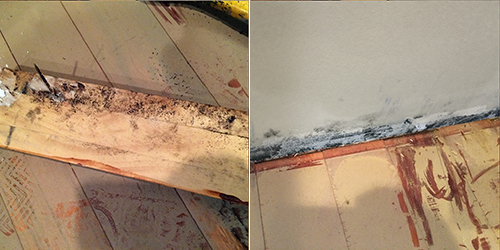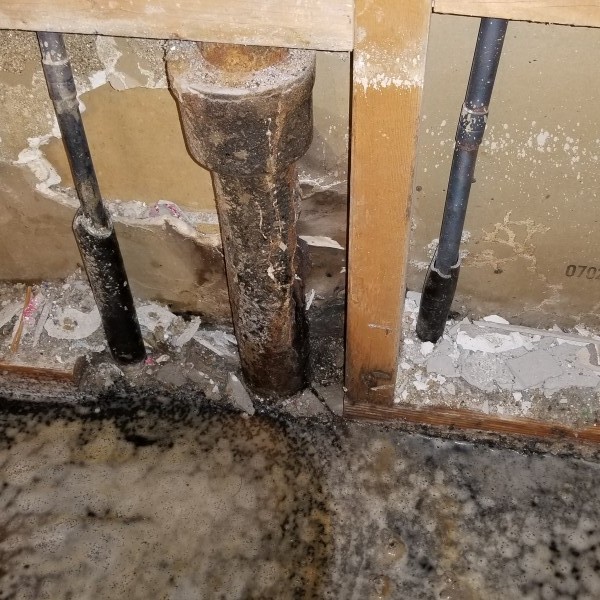Exactly How to Prevent Bathroom Water Damage
Schedule Your Job NowRight here in the next paragraph you might get additional very good resources about Preventing Water Damage in the Bathroom.

The restroom is exceptionally prone for moist buildup and possible water damage as a result of the regular use of water in it. This post offers straightforward evaluation strategies to assist detecting water damages hazards.
The regular use of water in the shower room makes it extremely prone for moist buildup as well as possible water damage. By evaluating it frequently, you can lower water relevant damages.
The adhering to collection of inspections is very easy to carry out as well as need to be done once in every 3 months in order to maintain your bathroom in good shape and also to prevent prospective water problems caused by the tub, the shower, pipeline joints and also plumbing, sinks, cabinets, as well as the toilet
Do not disregard performing these assessments and also be comprehensive while doing them. Remember that these simple evaluations can conserve you a lot of cash by offering very early indications for water damage
Sinks and also Cabinets
Sinks and cupboards are revealed to moisture as well as moisture daily as well as are often neglected. Check regularly under the sink and on the counter top over it. Repair any type of drip in the catch as it might suggest drain troubles. Look around the sink, sluggish draining pipelines might indicate a blocked drainpipe. Change sink seals if they are cracked or loose.
Tub and Shower
The shower and tub call for unique attention and also maintenance. Check the ceramic tiles and also change if cracked. Ensure that there is no missing out on grout between the ceramic tiles. Evaluate and replace cracked caulking at joints where the walls meet the floor or the bath tub. Obstructed drains pipes and also pipelines troubles will certainly protect against the bath tub from drying out and also might show severe troubles underneath the tub. Seek advice from a specialist quickly to stop structural damage. Take notice of stainings or soft areas around the bathtub walls as they may show an inner leakage.
Plumbing
Signs for water damages are difficult to spot since the majority of pipelines are set up inside the wall surfaces.
Pay special focus to flooring as well as wall surfaces wetness and also discolorations as they might show an invisible plumbing trouble. Examine dampness degrees in adjacent areas as well.
The Toilet
The toilet is a vulnerable water joint. Examine the water lines and also look for leakages around the commode seat, in the tube, and also under the water container. If you identify any kind of indicators of dampness on the flooring around the commode, look for leakages in the toilet rim as well as tank seals.
Understand that hanging toilet bowl antiperspirants raises the opportunities for obstructions.
Water Damage Signs In The Bathroom To Avoid Cleanup
Musty smell
This is one of the easiest signs to catch because musty smells are so odorous. The damp, earthy, moldy smell should be a big red flag. The smell will develop when moisture gets trapped in surfaces, and begins to facilitate mold growth. Leaking pipes under cabinets, inside walls, and behind shower fixtures will cause moisture to stay trapped and not dry, which will lead to mold growth and spread. As soon as you notice any musty smells in your bathroom, have it checked for hidden water damage and cleanup signs.
Visible mold
If the smell isn’t there to give it away, sometimes you will actually see mold growth. Finding mold in your bathroom is a serious problem, because mold is very harmful to your health. By the time mold growth is visible, it also means that water damage has already occurred and been present for some time. The only way the mold problem can be resolved is to find the source of the moisture and get it stopped. To safely and adequately remove mold, you need to have professionals handle the remediation. Do not waste any time in getting mold problems addressed, fixed, and sanitized so that you can protect you and your family from the many respiratory symptoms caused by mold exposure.
Damaged floors
Bathroom floors should be able to withstand some exposure to water while still remaining in good condition. However, when excess exposure or water leaks occur, they will begin to damage even the most water-resistant flooring. If you notice any cracking, bubbling, staining, or warping on your bathroom floors, there is probably a water leak somewhere causing the distortion. If you notice areas of the floor have become softer, or even have a spongy feeling, there is probably damage to the subfloor. Subflooring is typically made up of plywood. When plywood is exposed to water or moisture, it will absorb it. Once it has become saturated, the weight of the excess water will cause the wood to swell and soften. Check the floors in your bathroom frequently to catch any of these sings before they lead to damaged subflooring.
Changes on walls
When water leaks behind walls, it will cause changes in the drywall. Peeling plaster, blistering paint, and soggy wallpaper are all good indicators that excess water is building up behind the wall. Water leaking behind drywall will cause it to swell and be soft to the tough. If you start to notice gaps along the trim of your walls, or where tile meets the wall, it could also be a strong indicator that there is a leak behind the wall. Any changes, distortion, or damage on the walls should be evaluated as soon as you notice it to prevent further water damage and cleanup.

As a passionate reader about How to Repair and Prevent Bathroom Water Damage, I assumed sharing that excerpt was a good thing. If you please take the opportunity to distribute this post if you liked it. Thank you for your time. Visit again soon.
Click For More Information